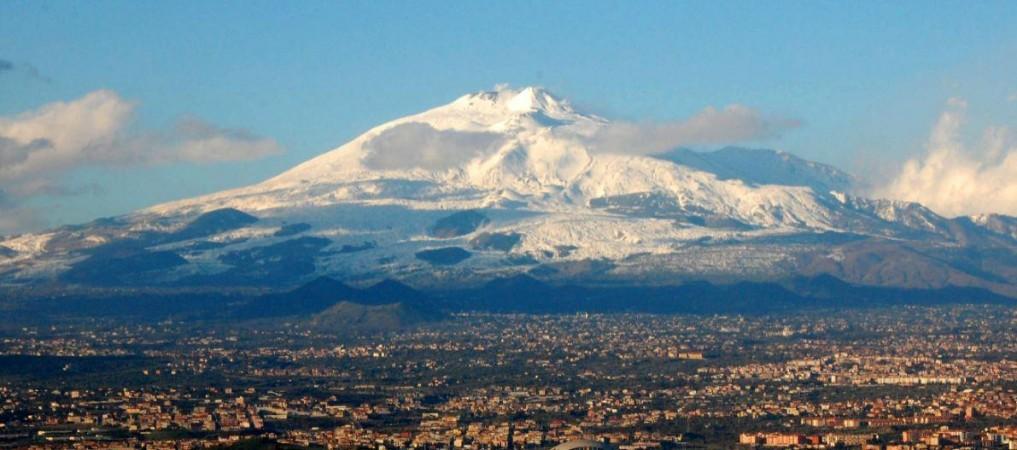The idea of a volcano, big or small, is a scary one. While the annihilation of Pompeii by the eruption of Mt. Vesuvius over 2,000 years ago is still a popular example of nature's fury, volcanoes have caused substantial loss of life over the course of human history. Now, satellite images have revealed that Europe's tallest and most active volcano, Mount Etna, has grown in height by about 30 m (100 ft) in the past 6 months; making it reach a new record height.
According to the National Institute for Geophysics and Volcanology (INGV), the height of Mount Etna has increased to 3,357 m (11,013 ft) from 3,326 m (10,912 ft) above sea level. This sudden rise has been attributed to around 50 paroxysmal episodes, or eruptions, that have occurred in one of its four summit craters—the Southeastern crater—since 16 February 2021.
"Thanks to the analysis and processing of satellite images, the Southeast Crater is now far higher than its "big brother", the Northeast Crater, the undisputed peak of Etna for 40 years," the INGV said in a statement.
Towering Over Sicily

Mount Etna, or Simply Etna, is located on the island of Sicily, Italy, around the city of Catania. It covers an area of 1,600 sq. km (600 sq. miles) and has a base circumference of around 150 km (93 miles). It is one of the most continuously active volcanoes not only in Europe but also the world, and its activity has been well-documented for nearly 2,800 years.
The volcano has four summit craters—the Northeast crater, two central craters known as Bocca Nuova and Voragine, and the Southeast crater (which was formed in 1978 following an eruption).

Despite being known for explosive explosions in the past, Etna has been mostly effusive in recent times. Most of the latest eruptions have been Strombolian eruptions, which are relatively mild and produce lava fountains, ash, and tephra. Such eruptions are quite common within these craters. Since 1980, the Northeast crater has been regarded as the summit of Etna.
The outbursts, or paroxysms, in September 1980 and February 1981 caused the crater, and Etna reached a maximum height of 3,350 m (10,990 ft). However, over the course of years, the height decreased as its edges collapsed. By the summer of 2018, the height settled at 3,326 m (10,912 ft).
Reaching 'New Heights'

However, the Southeastern crater has been erupting for the past 6 months—since 16 February 2021. Over 50 eruptions of lava fountains and ash—with some reaching heights of 1,500 m—have gradually led to the increase in the elevation of the youngest crater. This according to the INGV, which is located at the foot of Etna, has led to a "conspicuous transformation of the volcano's outline".

The new dimensions of the Southeastern crater were confirmed by satellite images captured in July 2021. The new numbers, which have an uncertainty of three meters, were acquired by processing two triplets of images obtained from the Pléiades satellite on 13 July 2021 and 25 July 2021. The two sets of satellite procured images (DSM, or Digital Surface Model) were aligned with each other and compared to a 2015 DSM used as reference.
"From the digital model of the terrain it emerges, as a preliminary point, that the highest point of the volcano is now on the northern edge of the Southeast Crater at an altitude of 3357 (± 3 m)," said the INGV in the statement.





!['Lip lock, pressure, pyaar': Vidya Balan- Pratik Gandhi shine in non-judgmental infidelity romcom Do Aur Do Pyaar [ Review]](https://data1.ibtimes.co.in/en/full/797104/lip-lock-pressure-pyaar-vidya-balan-pratik-gandhi-shine-non-judgmental-infidelity-romcom.jpg?w=220&h=138)







